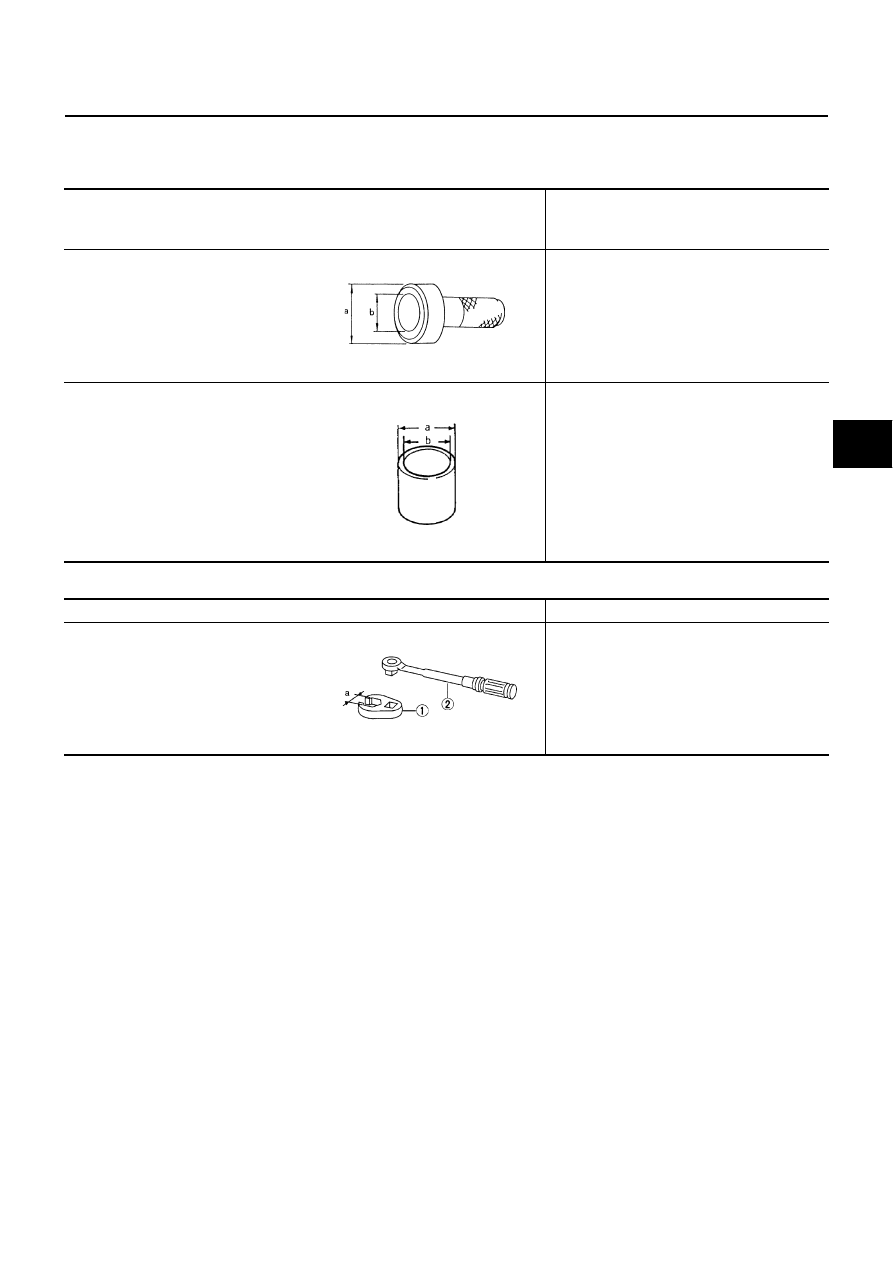Infiniti Q45. Manual - part 260

PREPARATION
BRC-5
[VDC/TCS/ABS]
C
D
E
G
H
I
J
K
L
M
A
B
BRC
PREPARATION
PFP:00002
Special Service Tools
NFS000CH
The actual shapes of Kent-Moore tools may differ from those of special service tools illustrated here.
Commercial Service Tools
NFS000CI
Tool number
(Kent-Moore No.)
Tool name
Description
ST30720000
(J-25405)
Drift
a: 77 mm (3.03 in) dia.
b: 55.5 mm (2.19 in) dia.
Installing rear sensor rotor.
ST27863000
(
—
)
Drift
a: 74.5 mm (2.93 in) dia.
b: 62.5 mm (2.46 in) dia.
KV40104710
(
—
)
Drift
a: 76.3 mm (3.00 in) dia.
b: 67.9 mm (2.67 in) dia.
Installing rear sensor rotor.
ZZC0760D
ZZA0832D
Tool name
Description
1.Flare nut crowfoot
a:10 mm (0.39 in)/12 mm (0.47 in)
2.Torque wrench
Removing and installing each brake piping
S-NT360